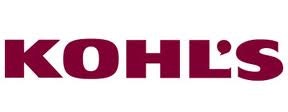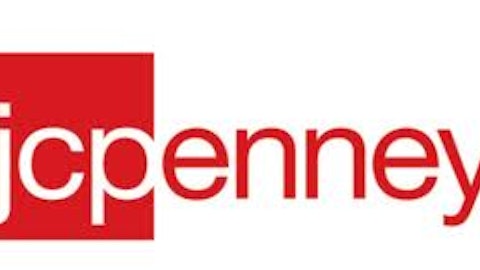
About Kohl’s
Kohl’s Corporation (NYSE:KSS) specializes in moderately priced apparel, shoes, accessories, and household items. The company’s target customers are predominately women between 25 and 54 years of age, and they have had success with this target group using their “good, better, best” philosophy of differentiating its product lines based on price and quality. Kohl’s’ sales come from a mix of private and national brand merchandise, and almost exactly half of the company’s revenues come from each.
One of the fastest growing national chains, over recent years Kohl’s Corporation (NYSE:KSS) has increased its total square footage by over 7% annually. Kohl’s is slowing down their expansion somewhat, although it does plan on opening 12 new stores this year (down from 21 last year).
In Good Economies and Bad
Kohl’s is somewhat unique among retailers in that it seems to be relatively recession proof, and barely lost any revenues as a result of the financial crisis. Comparing Kohl’s Corporation (NYSE:KSS) revenues over the past decade with those of competitors J.C. Penney Company, Inc. (NYSE:JCP) and Dillard’s, Inc. (NYSE:DDS) and you’ll notice that the dip in Kohl’s Corporation (NYSE:KSS) revenue over the tumultuous 2007-2010 period and you’ll see what I mean. A lot of this is thanks to Kohl’s healthy balance sheet, which has a lot less leverage than most of its competitors, however more than some of the big discounters (more on this later).
In fairness, J.C. Penney Company, Inc. (NYSE:JCP) has been on a decline since the recession began due to poor management. Hopefully (for them), Mike Ullman’s return as CEO will help kickstart the turnaround of this once great company. Dillard’s, Inc. (NYSE:DDS), on the other hand, has historically relied on a more affluent demographic than the other companies here. Anything having to do with luxury items was hit hardest by the recession, and Dillard’s was no exception, with shares plummeting from their 2008 high of $40.56 to a low of just $2.50 the very next year. With shares currently just under $90, I wish I had the foresight to buy back then. Even though shares have recovered nicely, sales are still below their pre-recession level as seen in the chart below.

Cheaper Than the Alternatives?
At just over 11 times last year’s earnings, Kohl’s is very attractively valued at the current price, especially considering that the consensus calls for average annual earnings growth of about 9.3%. The company’s dividend yield, currently at 2.9%, should be very sustainable and should continue to increase over the years ahead, especially because it represents a pretty low 33% payout ratio. Their main competition in the years ahead should come from stand-alone discount retailers such as Ross Stores, Inc. (NASDAQ:ROST), as opposed to companies like Dillard’s and J.C. Penney whose product assortment is closer to Kohl’s, but are usually located inside a mall.
Let’s see how Ross Stores, Inc. (NASDAQ:ROST) is valued, so we can get a better picture of Kohl’s investability. With about 1,200 stores, Ross is similar in size to Kohl’s and targets a similar demographic, making it a good comparison. Ross trades at a slightly higher P/E of 18.6 times TTM earnings, making it appear more expensive at first glance. Ross Stores, Inc. (NASDAQ:ROST)’ forward growth rate is projected to be a little better than Kohl’s at 11.2% annually, but the real difference between the two is Ross’ much stronger balance sheet which features about $500 million more cash than debt. In sharp contrast, Kohl’s has about $2 billion more debt than cash. This extra leverage creates a substantial amount of extra risk.
The Bottom Line
If you have a little bit of risk tolerance and can handle the extra leverage on Kohl’s Corporation (NYSE:KSS) balance sheet, the company may be worth a look right now. A P/E of 11 with forward growth of over 9% is a pretty good combination, especially if you think (as I do) that the economic recovery will continue for several more years. And don’t forget, for now you’ll be paid a nice 3% yield while you wait (Ross yields just over 1%).
The article This Discount Department Store Chain Could Pay Off originally appeared on Fool.com and is written by Matthew Frankel.
Copyright © 1995 – 2013 The Motley Fool, LLC. All rights reserved. The Motley Fool has a disclosure policy.

